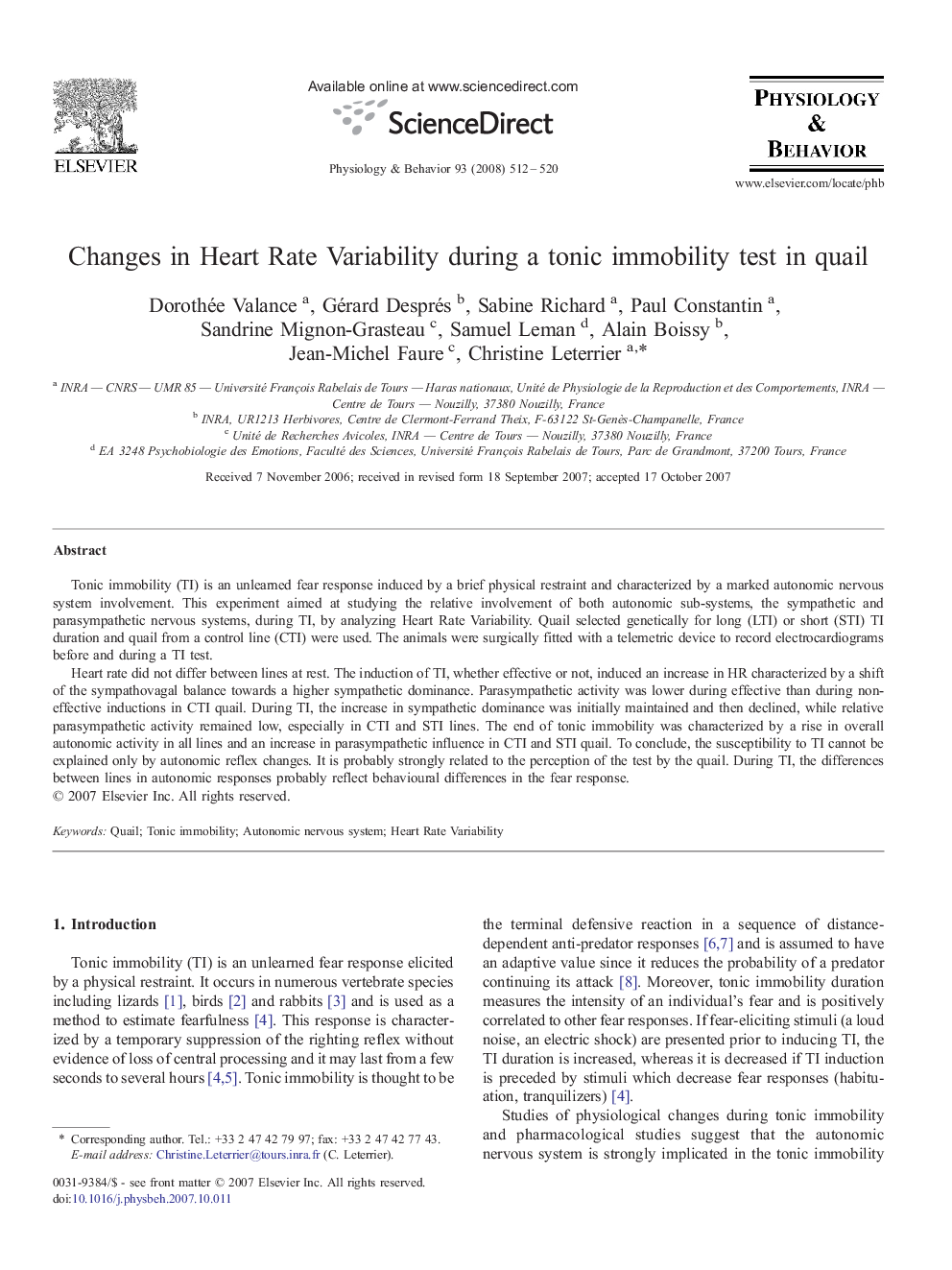| Article ID | Journal | Published Year | Pages | File Type |
|---|---|---|---|---|
| 2845687 | Physiology & Behavior | 2008 | 9 Pages |
Tonic immobility (TI) is an unlearned fear response induced by a brief physical restraint and characterized by a marked autonomic nervous system involvement. This experiment aimed at studying the relative involvement of both autonomic sub-systems, the sympathetic and parasympathetic nervous systems, during TI, by analyzing Heart Rate Variability. Quail selected genetically for long (LTI) or short (STI) TI duration and quail from a control line (CTI) were used. The animals were surgically fitted with a telemetric device to record electrocardiograms before and during a TI test.Heart rate did not differ between lines at rest. The induction of TI, whether effective or not, induced an increase in HR characterized by a shift of the sympathovagal balance towards a higher sympathetic dominance. Parasympathetic activity was lower during effective than during non-effective inductions in CTI quail. During TI, the increase in sympathetic dominance was initially maintained and then declined, while relative parasympathetic activity remained low, especially in CTI and STI lines. The end of tonic immobility was characterized by a rise in overall autonomic activity in all lines and an increase in parasympathetic influence in CTI and STI quail. To conclude, the susceptibility to TI cannot be explained only by autonomic reflex changes. It is probably strongly related to the perception of the test by the quail. During TI, the differences between lines in autonomic responses probably reflect behavioural differences in the fear response.
